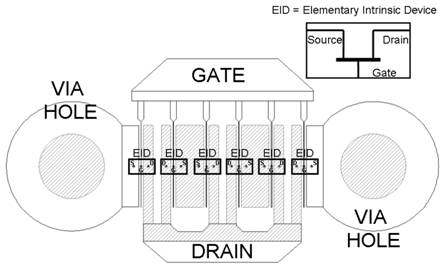ED Modelling
ELECTRON DEVICE NONLINEAR MODELLING
The main aim of this research theme is the development of electron device models to be used for the CAD of non-linear microwave circuits (e.g., amplifiers, oscillators, mixers, etc.). As an alternative to conventional equivalent circuits, black-box look-up-table based models have been proposed. They originate from non-linear dynamic system theory through a suitable modification of the Volterra series. However, with respect to the latter, the proposed models can be directly identified through conventional DC and AC measurements and their application is not limited to weakly non-linear operations.
|
In the same context the modelling of dispersive effects, due to thermal phenomena and surface state densities or deep level traps, in III-V FETs has been widely addressed. Different dispersive I/V models have been developed and successfully applied for the description of the dynamic deviations of the drain current. Moreover, the important influence of the dispersive model accuracy on the large-signal performance prediction has been pointed out. The dispersive I/V models have been implemented both in the context of black-box and conventional equivalent circuit models. |
 |
As far as the modelling of millimetre-wave electron devices is concerned, several distributed modelling approaches have been developed which exploit, beside conventional measurements, accurate electromagnetic simulations of the device layout. Scaling properties and robust extrapolation characteristics of the proposed models have been demonstrated.
Recently new advanced nonlinear and dynamic-bias measurement techniques have been applied in the context of electron device modeling.


